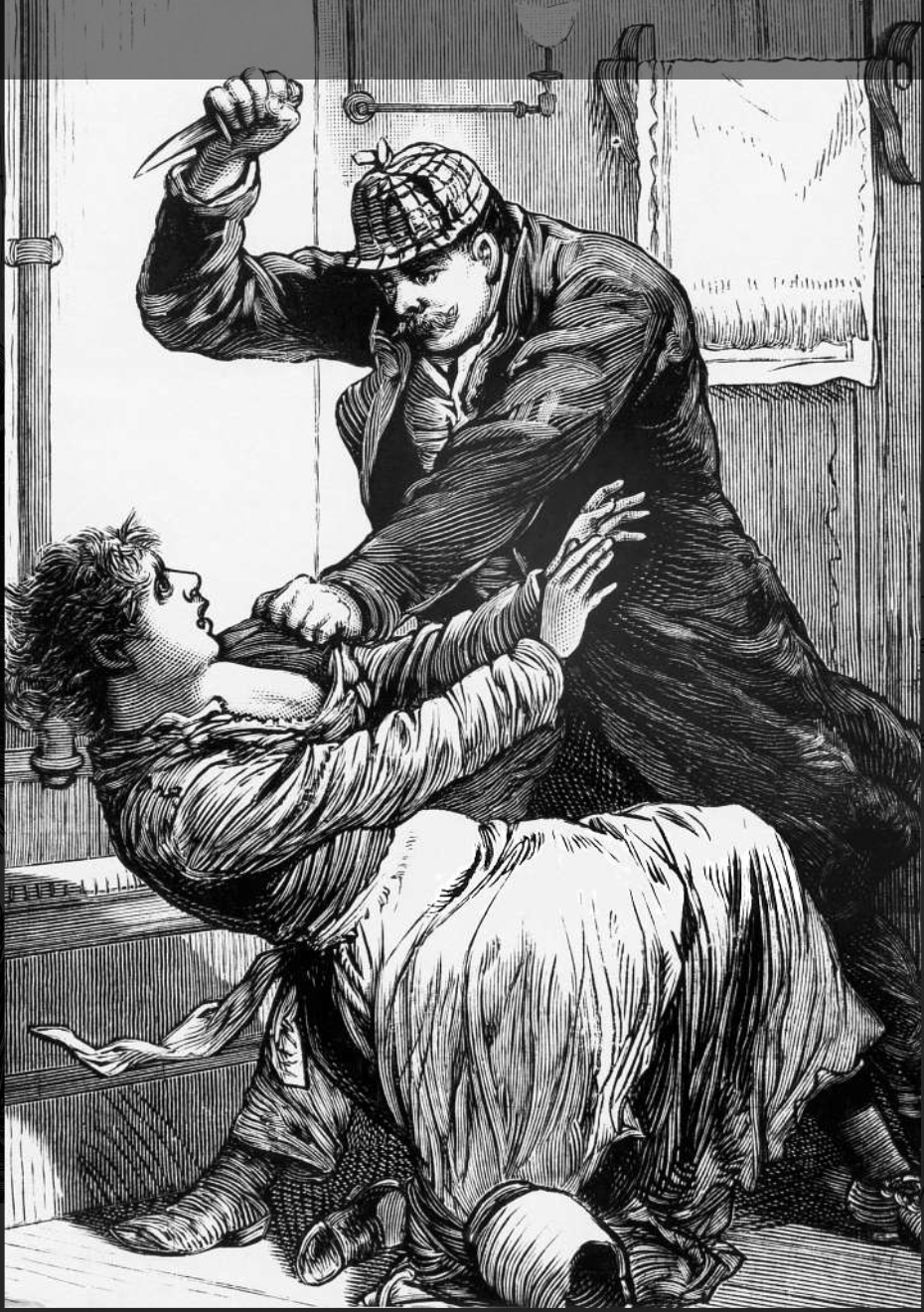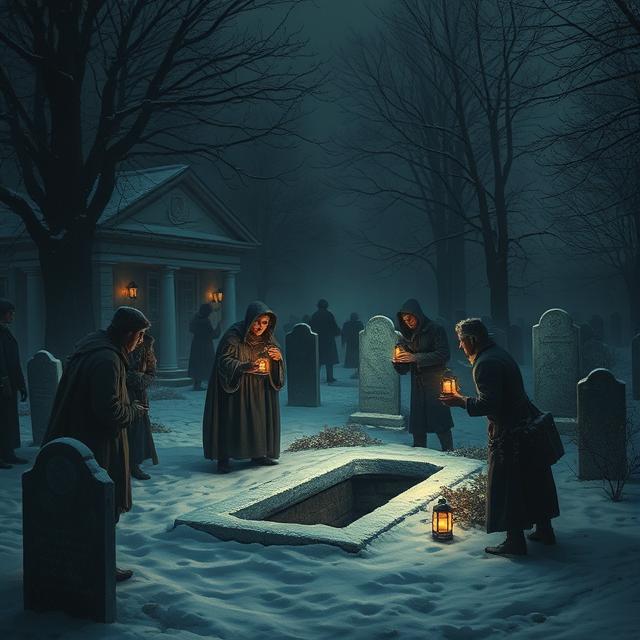The wild and windswept coasts of Scotland, with their hidden caves and craggy cliffs, have long been fertile ground for folklore and tales of the strange and macabre. Among these dark narratives, the legend of the Sawney Bean Clan stands out as particularly gruesome: a supposed family of inbred cannibals who, over generations, ambushed, murdered, and consumed hundreds, if not thousands, of unsuspecting travelers. Living in seclusion within a coastal cave, they are said to have terrorized the region, their existence a horrifying secret until their eventual and brutal demise at the hands of the authorities. But how much of this chilling tale is historical fact, and how much is embellished folklore, a morality story designed to terrify and warn? Let us venture into the shadowy depths of the Sawney Bean legend and attempt to separate the bone-chilling narrative from the potential historical realities.
The traditional telling of the Sawney Bean story paints a picture of unspeakable horror. Alexander “Sawney” Bean is said to have been born in the late 15th or early 16th century in Banffshire. Rather than following a conventional path, Sawney supposedly took to a life of lawlessness, eventually meeting a woman with similarly depraved tendencies. Together, they sought refuge in a secluded cave on the Ayrshire coast, near Ballantrae. This cave, with its complex network of tunnels extending for over a mile, became their lair and the birthplace of their monstrous offspring.
Within the confines of this hidden cavern, Sawney and his wife produced a large, incestuous family – reportedly dozens of children and grandchildren, all raised in isolation and taught only the brutal ways of their parents. To survive, the clan allegedly ambushed travelers along the lonely coastal roads, robbing them and then, in a truly horrifying twist, butchering and cannibalizing their victims. The sheer scale of their alleged crimes is staggering, with some accounts claiming they were responsible for the disappearance of over a thousand people over a period of roughly 25 years.
The legend details how the Bean clan became adept at their gruesome practices. They would supposedly lie in wait along the roads, attacking lone travelers or small groups. The bodies were then dragged back to their cave, where they were dismembered, and the flesh was cured, pickled, and consumed. The bones and discarded remains were said to have been tossed into the sea or piled up in hidden sections of the cave.
For years, the disappearances were a mystery, causing widespread fear and speculation in the local communities. People vanished without a trace, leaving behind only unanswered questions and grieving families. The lack of bodies initially baffled authorities, who were unaware of the horrific fate that had befallen the missing.
The turning point in the Sawney Bean saga allegedly came when the clan ambushed a man and his wife who were returning from a fair. The man, strong and skilled in combat, fought back fiercely, delaying the attackers until a large group of other travelers appeared. The Bean clan was forced to flee back to their cave, leaving behind a survivor who could finally recount their terrifying ordeal to the authorities.
Enraged by the years of unsolved disappearances, King James VI of Scotland (later James I of England) is said to have personally led a large group of men to hunt down the cannibalistic clan. With the help of bloodhounds, they eventually located the Bean family’s hidden cave. Inside, the scene that awaited them was one of unimaginable horror: human remains in various states of decomposition, barrels filled with pickled flesh, and the clan itself – a large, inbred family hardened by years of violence and isolation.
According to the legend, the entire Bean clan, numbering around 45-48 individuals, was captured. They were deemed so monstrous that they were denied a trial and instead subjected to immediate and brutal execution. The men were dismembered, and the women were burned at the stake, their end as gruesome as the lives they were said to have led.
The tale of Sawney Bean and his cannibalistic family is undoubtedly a chilling one, often recounted as a true historical event. However, many historians and folklorists debate its authenticity. Several aspects of the story raise questions:
- Lack of contemporary evidence: Despite the alleged scale of the crimes and the involvement of the King, there is a notable lack of contemporary historical documentation to definitively corroborate the entire narrative as presented. While disappearances certainly occurred, a mass cannibalistic family operating for decades without significant historical record is unusual.
- Sensationalism: The extreme nature of the story – incestuous cannibalism on a massive scale – lends itself to sensationalism, a common element in folklore and cautionary tales.
- Potential for propaganda: Some theories suggest the story might have been English propaganda aimed at demonizing the Scots during a period of conflict and rivalry.
Despite these doubts, the legend persists, and there are arguments for a possible, albeit perhaps less extreme, historical basis:
- Folk memory of lawlessness: The tale might be a distorted recollection of particularly brutal acts of banditry that occurred in the region. Coastal areas often provided hiding places for outlaws.
- Moralistic storytelling: The story could serve as a morality tale, warning against incest, isolation, and savage behavior. The gruesome end of the Bean clan would then be a form of retributive justice in the narrative.
Regardless of its precise historical accuracy, the legend of Sawney Bean has had a lasting impact on popular culture, inspiring horror stories, films, and even influencing the portrayal of cannibalistic figures in fiction. The image of a hidden cave teeming with a bloodthirsty, inbred family preying on the innocent remains a potent source of fear and fascination.
Whether Sawney Bean was a real historical figure who led a clan of cannibals, or a more embellished creation of folklore, the enduring power of the tale speaks to our primal fears of the unknown, the monstrous, and the potential for unimaginable darkness to exist in the hidden corners of the world. The rugged Scottish coast, with its dramatic landscapes and secluded coves, provides a fitting backdrop for such a terrifying legend, a place where the veil between reality and nightmare seems thin. The story of the Sawney Bean Clan, true or not in its entirety, remains a chilling entry in the sinister archive of human depravity.
Want to explore the shadows even deeper? For more chilling cases like this, visit SinisterArchive.com, where the legends are real.




